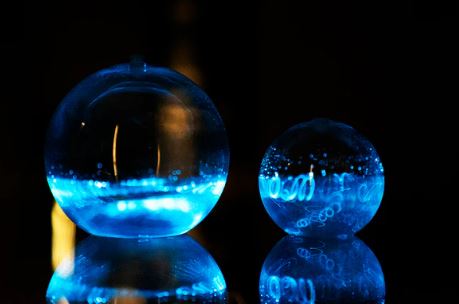Some small plants can make a big difference!

Some small plants can make a big difference!
I have to admit that this post was inspired by an episode of Alone. One of the participants boiled “Reindeer Moss” to eat. That made me wonder, is moss good for anything else?
You will never see some of the best plants at filtering air pollution when strolling through the aisles at the local garden center or nursery. Why? Well, they just aren’t…popular. If we only knew what they could do, maybe they would take front and center stage!
Moss: Ok, you may see moss at the garden center but it’s typically only used as a decoration to cover bare soil. A couple of German entrepreneurs think it has a lot more to offer than decoration. They have launched their business to bring moss walls to cities across Europe and around the world. Moss walls are available in three configurations for installation in temporary or permanent displays. Why moss?
- The moss walls filter up to 82% of fine dust from the air flowing through them.
- Water vapor evaporates from the leaf surface of the moss, creating a cooling effect of up to 4 degrees C (about 7 deg F)
- The moss wall also removes up to 355 kg of CO2 every year.
To make the most out of this amazing plant, fans draw in air through the moss and sensors monitor the health of the plants, providing automatic watering. Sounds like we could use moss walls in the US!
Plankton: Unless you are a fish enthusiast, plankton is not usually very convenient to keep in your home. Enter the Bio Orb, a glass container of bioluminescent phytoplankton, plankton that can produce light at night and fresh oxygen during the daytime. Pyro Farms, is the maker of the Bio Orb, a glass sphere with a flat bottom and a specially designed stopper to allow air exchange but prevents excessive evaporation. The Bio-Orb provides the ideal environment for growing PyroDinos (the bioluminescent phytoplankton) at home, in the office or at school. (pyrofarms.com) Scientists estimate that all plant-plankton (phytoplankton) are responsible for more than 70% of the air we breathe, so keeping plankton in your home, school or office offsets your personal carbon output. (earthsky.org)

Source: (pyrofarms.com)
Lichen: I remember learning about this plant in biology and probably geography. Pictures of reindeer munching on lichen in the tundra come to mind. What I don’t remember learning is that it’s not actually just a plant, but a combination of two or three organisms: a fungus and green algae or cyanobacteria, often both. The fungus provides the structure that determines the shape of the organism, while the algae and/or cyanobacteria provide photosynthesis to feed both the fungus and the algae/bacteria. There are three types of lichen growth, which have various abilities to absorb pollutants and concentrate heavy metals (hobbyfarms.com). They are like natural sensors in the environment to tell us about the pollutants in the air.
Crustose lichens are flat; since they have the least amount of surface area to absorb pollutants, they are the most abundant.
Foliose lichens have a leafy shape and tend to stand off the substrate (wood, rock, etc) a bit. They have a little more surface area so are a little less tolerant to air pollution.
Fruticose lichens are like tender, miniature shrubs, having the most surface area. These only thrive in pristine areas with minimal air pollution.
Next time you are on a walk, look for moss and lichen. They are small plants that can make big contributions to healthy air!

Two "Moss Trees", source greencitysolutions.de






